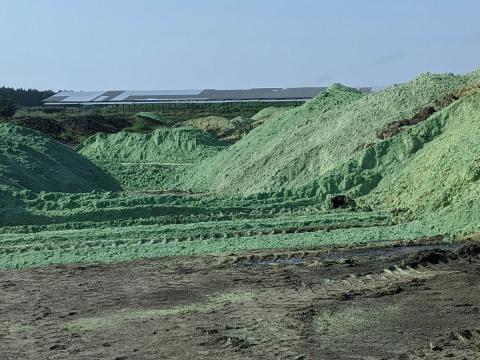The Water Sciences Lab is essential to monitoring the impacts of AltEn pesticide contamination, one of the worst environmental disasters in Nebraska. Located near Mead, Nebraska, the AltEn ethanol plant created innovative ways to generate ethanol from feedstocks consisting almost entirely of leftover seed corn treated with pesticides and fungicides. Treated seed is not unusual; but using it in large volumes to produce ethanol is. Over time, area residents became concerned as fish, bees and house pets fell ill or died. Residents reported strong odors in the air, burning eyes and breathing difficulties. In early 2021, the State of Nebraska shut down the plant after numerous violations and a burst pipe spilled waste into a nearby watershed. Of specific concern are the neonicotinoid insecticides found on the treated seed. The toxicity of neonicotinoids has been established and current research focuses on the environmental and health threats from their degradation byproducts.
The Water Sciences Laboratory first started testing samples for neonicotinoid insecticides for several clients and research projects about 15 years ago in response to increasing use of these chemicals in crop production. Over time, they expanded this analysis to include many fungicides and then most recently for degradation products of imidacloprid, thiamethoxam, and clothianidin (three of the most commonly used neonicotinoids) for Dr Tiffany Messer’s research on the fate and transport of these contaminants in the environment. The lab was also testing samples of dust and pollen for Dr. Wu-Smarts student’s research. Shortly after they developed a combined method using a new high sensitivity triple quadrupole mass spectrometer, the AltEn incident became headline news.
The Water Sciences Lab is one of the only facilities in the US that can offer such comprehensive methods for insecticide and fungicide residues in water, soil, and biological samples. The level of measurements would not be possible without their mass spectrometry technology and staff expertise.
The lab is continuing to collect and test air, dust, surface water, groundwater, soil and vadose zone samples from the areas that received wastewater and “wet cake” from the facility. This effort includes researchers from the US Geological Survey, US Environmental Protection Agency and all University of Nebraska campuses. This work will help to understand the magnitude and scale of the environmental occurrence of these chemicals, along with any associated ecological and human health effects from exposure.
A recent update on the progress of the AltEn contamination can be found here.

